
views
Deciding to Get a Canary
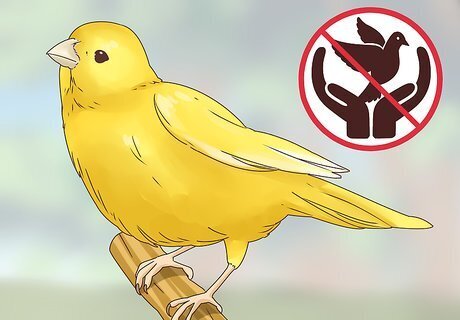
Buy a canary if you are okay with a bird who doesn’t like handling. Canaries are great pets for just about anyone, especially those who want a low-maintenance bird. These birds are ideal for people who don’t want to tame their birds and take them out of their cage to handle them. They prefer to remain in their cages and sing.
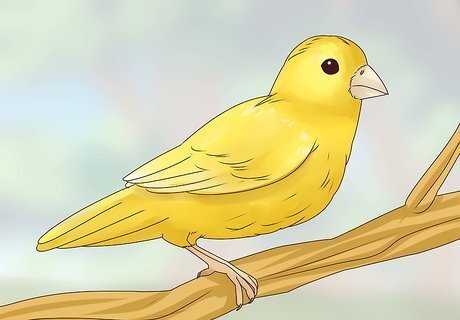
Choose a canary if you want a low-maintenance pet bird. Canaries are an easier species of bird to keep as a pet than species such as a parrot or cockatiel. Canaries don’t like to be handled, and they don’t require exercise or daily human interaction. Canaries prefer to stay in their cage, flying around and amusing themselves. The ease of care for canaries make them good pet birds for families with children or elderly people.
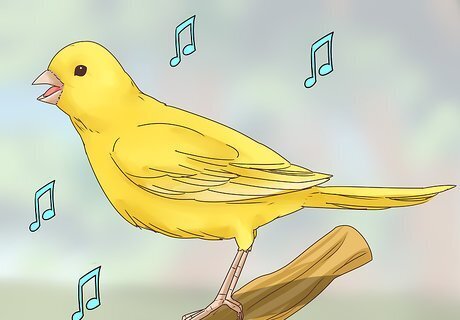
Consider a canary if you want a singing bird. Canaries are most widely known for their beautiful songs, but only the males sing. They don’t squawk or scream like other species, but they also sing often through the daylight hours. You can’t train a canary to stop singing, so only buy this species if you are okay with having a canary’s song in your home. The most common species known for their beautiful singing are the Waterslager, the German Roller, the Russian Singer, the Spanish Timbrado, and the American Singer.
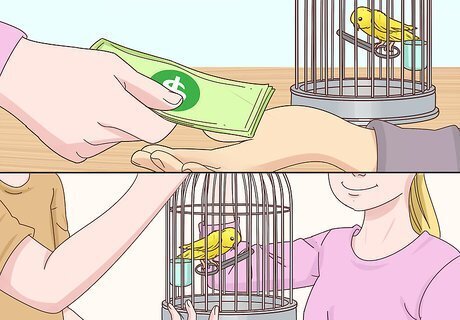
Decide between buying or adopting. You can buy your canary from a local breeder, a pet store, or a bird show. Reputable breeders may be the best way to guarantee you are not going to get a bird from a bird mill. You also may choose to adopt a bird who has been abandoned and needs a home. Contact local vets and animal shelters to find out where you can adopt or purchase canaries in your area. You can also check online using pet finder websites.
Evaluating Physical Characteristics
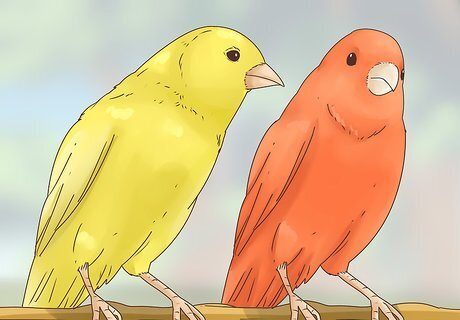
Decide between a yellow or red canary. There are two types of canaries, those with yellow or white bases or those with a red base. Red birds can also be shades of orange. Yellow is the most common color, and the most prized have no other colors at all. White birds have shades of yellow on some of their feathers and tails. One type of white has no yellow at all. Some canaries have brown and black pigments on yellow, white, or red bases.
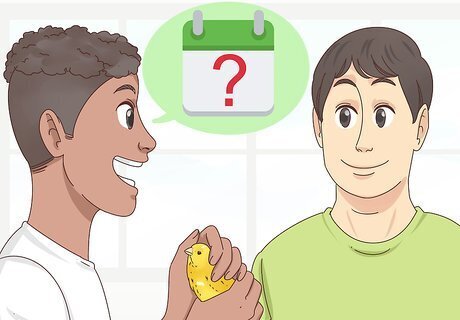
Determine how old you want your canary to be. Most canaries have a lifespan of ten years. You may want to buy a younger bird so you can enjoy them for most of their life. However, you may want to buy or adopt an older bird who needs a good home, even if it is seven or eight years. Ask how old the bird is so you can decide if the age is right for you. Make sure the bird is old enough to determine gender. All young birds sing, so it’s easy to mix up a male and a female.

Determine if you want a male or female. One of the things you should consider when buying a canary is whether you want a male or female. Males are the only canaries that can sing, but they need to be the only bird in the cage. They will fight with other males, and may even fight the females. Females are very social and can be put together with other females.
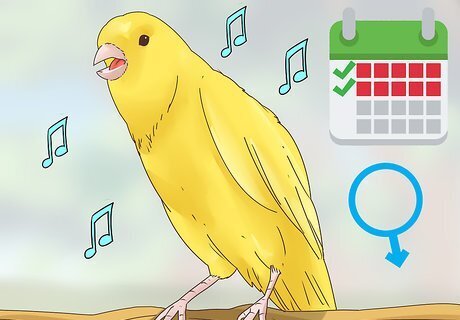
Get a written guarantee if you buy a male. Sometimes, people will buy a male canary and find out later that it is actually a female. Male canaries cost more than females, so you don’t want to get the wrong sex. If you are buying from a store, ask for a written guarantee that your bird is male. Ask about any return policies. Your bird should start singing within two weeks. If it doesn’t, return it or ask for a refund for the difference. Birds can also be DNA sexed. This is a test that will allow you to know whether the bird is male or female. It is the most common way to sex birds.
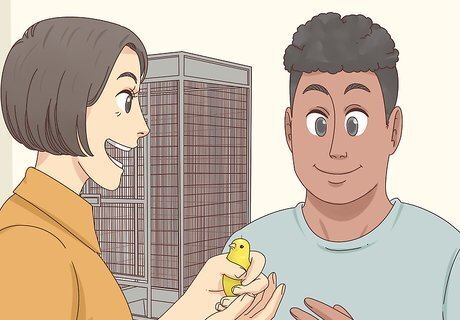
Look into which species are available in your area. There are a lot of kinds of canaries. You are more than likely limited to those that are available in your area. Find a breeder if possible to figure out what kinds are available. You can find breeders through veterinarians, local bird clubs, or online. If you have to buy from a pet shop, look the canary over closely before purchasing.
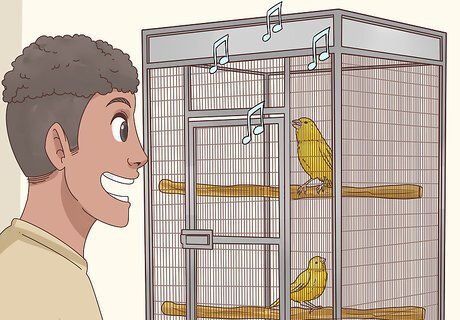
Ask to see the canaries in a listening room. If you are choosing a canary because of their singing, you should hear it sing before choosing it. You can ask a pet store if you can take the canaries into a room without other birds so you can listen to them. If you contact a breeder, request to see only the birds you can buy. Separating the canaries from other birds gives you a chance to hear their singing voices without interference.
Choosing a Healthy Bird

Choose a bird that is lively. When you choose a canary, you want to make sure it is lively and active. This indicates a healthy bird. It should be moving around, standing straight, and talking. Healthy birds will also be alert.
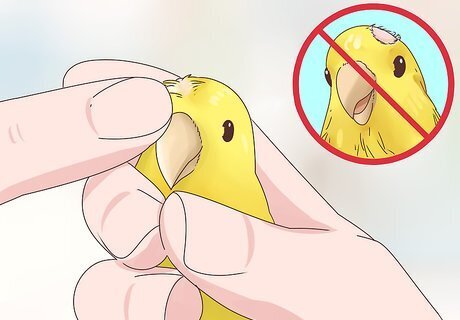
Look for healthy plumage. The plumage of the canary you choose needs to be smooth and shiny. The feathers should not have any problems, like broken shafts or bald spots. The bird should be well-groomed and neat.
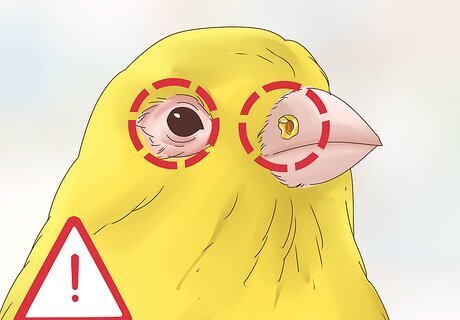
Look for signs of physical problems. Your bird should look healthy. The eyes should be bright and clear, with no signs of swelling or discharge. There should also be no nasal discharge. Take the bird in your hand and feel the chest. If you can feel the bone there, the bird might be too skinny. Bring the bird close to your ear and listen. Any clicking or wheezing in the respiration or breathing may point to disease. If you have experience handling canaries, then gently catch it in your hands so you can inspect it. If you don't know how to catch it, ask the breeder or pet store worker to catch it or take it out of its cage so you can inspect it closely while they hold it.

Examine the cage. Look at the cage your potential canary is in. A clean cage is a sign of a healthy bird. Look at the droppings for signs of problems. Watery droppings or red in the droppings indicate potential problems. A crowded cage may also indicate an unhealthy bird. The bird should have plenty of room to perch.




















Comments
0 comment